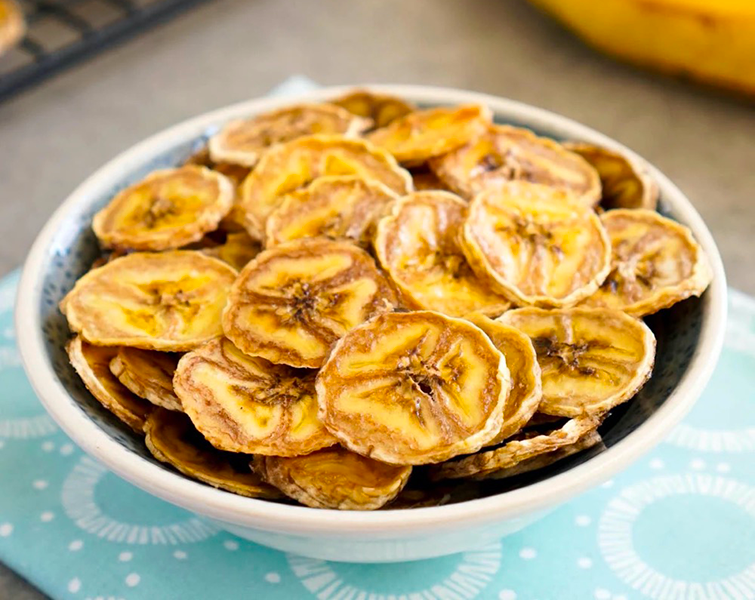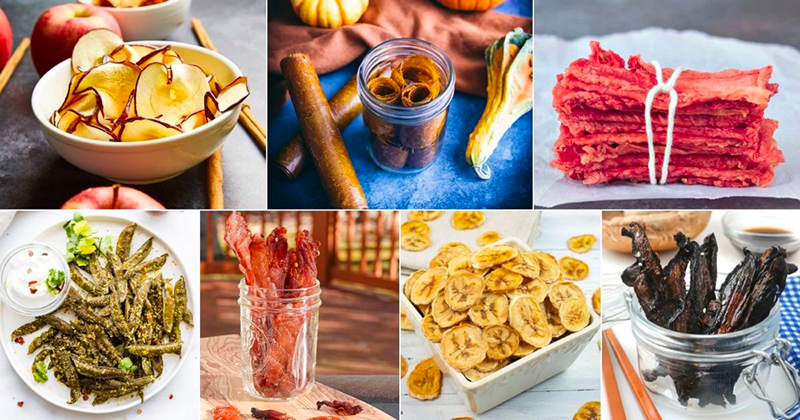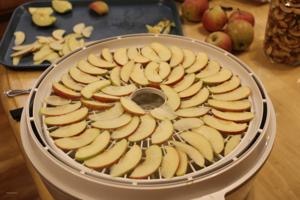
Content Menu
● The Benefits of Using a Food Dehydrator
● Popular Snacks to Make in a Food Dehydrator
>> 1. Dried Fruits
>> 2. Vegetable Chips
>> 3. Jerky
>> 4. Fruit Leathers
>> 5. Trail Mix Ingredients
● Additional Creative Snacks
>> 6. Granola
>> 7. Crackers
>> 8. Yogurt Drops
>> 9. Dried Flowers
● Tips for Using Your Food Dehydrator
● Conclusion
● FAQ
>> 1. What types of foods can be dehydrated?
>> 2. How long does it take to dehydrate food?
>> 3. Do I need to pre-treat fruits before dehydrating?
>> 4. Can I use my oven instead of a dehydrator?
>> 5. How should I store dehydrated foods?
● Citations:
Food dehydrators are versatile kitchen appliances that allow you to create a plethora of healthy snacks. By removing moisture from food, dehydrators preserve nutrients while extending shelf life, making them an excellent choice for health-conscious individuals. In this article, we will explore various snacks you can make using a food dehydrator, highlighting their benefits and providing detailed recipes.

The Benefits of Using a Food Dehydrator
Using a food dehydrator offers numerous advantages:
- Nutritional Retention: Dehydrating food helps retain vitamins and minerals that might be lost during other cooking methods.
- Cost-Effective: Making your own snacks at home can save money compared to purchasing pre-packaged options.
- Waste Reduction: Dehydrators allow you to use up excess fruits and vegetables before they spoil.
- Customization: You can control the ingredients and flavors, avoiding preservatives and added sugars.
Popular Snacks to Make in a Food Dehydrator
1. Dried Fruits
Dried fruits are among the most popular snacks made in food dehydrators. They are sweet, portable, and nutritious. Here are some favorites:
- Apple Chips: Slice apples thinly, sprinkle with cinnamon if desired, and dehydrate at 135°F (57°C) for 6-12 hours until crispy.
- Banana Chips: Slice bananas and dehydrate at 135°F (57°C) for about 10-12 hours. These make a great snack on their own or dipped in nut butter.
- Mango Slices: Peel and slice mangoes, then dehydrate at 135°F (57°C) for 8-12 hours. Dried mango is chewy and flavorful.
- Dried Orange Slices: These pretty little slices taste like candy. Seasoned with cinnamon, ginger, and coconut sugar, they're sweet, tart, and delightful. Use them as garnishes for drinks or desserts.
- Dried Strawberries: Crunchy, sweet, slightly tangy, and absolutely delicious. Use them in baked goods or as a topping for yogurt or oatmeal.
2. Vegetable Chips
Vegetable chips are a healthier alternative to traditional potato chips. Here are some ideas:
- Sweet Potato Chips: Thinly slice sweet potatoes, toss with olive oil and salt, and dehydrate at 135°F (57°C) for 6-10 hours.
- Kale Chips: Remove stems from kale leaves, toss with olive oil and seasonings like garlic powder or nutritional yeast, then dehydrate at 125°F (52°C) for 4-6 hours until crispy.
- Zucchini Chips: Slice zucchini thinly, season as desired (try Italian herbs), and dehydrate at 135°F (57°C) for about 8 hours.
- Mediterranean Eggplant Chips: Slice eggplant thinly, season with olive oil and herbs like oregano or thyme, then dehydrate until crispy.
3. Jerky
Homemade jerky is a protein-packed snack that can be made from various meats or even tofu.
- Beef Jerky: Marinate thin slices of beef in your favorite marinade overnight. Dehydrate at 160°F (71°C) for 4-6 hours until the desired texture is achieved.
- Turkey Jerky: Similar to beef jerky but using turkey breast. Marinate and dehydrate following the same process.
- Vegetarian Jerky: Use marinated tofu or seitan as a meat alternative. Slice thinly and dehydrate until chewy.
4. Fruit Leathers
Fruit leathers are chewy snacks made from pureed fruit. They are easy to make and customizable.
- Basic Fruit Leather: Blend your choice of fruits (like strawberries or peaches) until smooth. Spread evenly on a dehydrator tray lined with parchment paper and dehydrate at 135°F (57°C) for 6-8 hours until pliable.
5. Trail Mix Ingredients
Dehydrators can also be used to prepare components for trail mix:
- Dehydrated Nuts: Lightly toast nuts in the dehydrator at 115°F (46°C) for several hours to enhance flavor without cooking them.
- Dried Herbs: Harvest herbs like basil or oregano, wash them thoroughly, then dehydrate at 95°F (35°C) until completely dry.

Additional Creative Snacks
Beyond the typical snacks mentioned above, there are many creative ways to utilize your dehydrator:
6. Granola
Making your own granola is simple with a dehydrator. Combine oats with nuts, seeds, honey or maple syrup, and spices like cinnamon. Spread the mixture on dehydrator trays and dry at around 145°F (63°C) until crunchy.
7. Crackers
You can create healthy crackers by blending nuts, seeds, vegetables, and spices into a dough-like consistency. Spread it thinly on dehydrator trays and dry until crisp.
8. Yogurt Drops
Drop dollops of yogurt onto dehydrator trays to create yogurt drops that are perfect for snacking or topping desserts. Dehydrate at around 135°F (57°C) until they harden into chewy bites.
9. Dried Flowers
While not edible in the traditional sense, dried flowers can be used as beautiful garnishes for dishes or drinks. Flowers like hibiscus or lavender can be dehydrated easily.
Tips for Using Your Food Dehydrator
1. Uniform Slicing: Ensure all pieces of food are sliced uniformly for even drying.
2. Pre-treatment: Some fruits may need pre-treatment to prevent browning; soaking in lemon juice is effective.
3. Storage: Store dehydrated foods in airtight containers in a cool, dark place to maximize shelf life.
4. Experimentation: Don't hesitate to experiment with different seasonings and combinations of fruits and vegetables!
5. Humidity Control: Low humidity is essential for efficient dehydration; ensure your environment is not too humid during the drying process.
6. Airflow Management: Adequate airflow ensures that moisture is continuously removed from the food's surface; avoid overcrowding trays to promote airflow.
Conclusion
Food dehydrators are fantastic tools for creating healthy snacks that cater to various tastes and dietary preferences. From dried fruits to vegetable chips and homemade jerky, the possibilities are endless. Not only do these snacks provide nutritional benefits, but they also promote sustainability by reducing food waste.
By following the recipes outlined above along with additional creative ideas using your dehydrator, you can enjoy delicious homemade snacks that are not only healthier but also more affordable than store-bought options.

FAQ
1. What types of foods can be dehydrated?
Almost any food can be dehydrated! Common options include fruits like apples and bananas, vegetables such as carrots and zucchini, meats like beef or turkey for jerky, and even herbs.
2. How long does it take to dehydrate food?
The time required varies based on the type of food being dehydrated and its moisture content. Generally, it can take anywhere from 4 to 12 hours depending on what you're drying.
3. Do I need to pre-treat fruits before dehydrating?
Some fruits benefit from pre-treatment with lemon juice or ascorbic acid to prevent browning; however, this is not always necessary depending on personal preference.
4. Can I use my oven instead of a dehydrator?
Yes! You can use an oven set to low temperatures (around 140°F or 60°C) as an alternative method for drying foods; however, it may not be as efficient as a dedicated dehydrator due to uneven heat distribution.
5. How should I store dehydrated foods?
Store dehydrated foods in airtight containers or vacuum-sealed bags in a cool, dark place to maintain freshness for longer periods.
Citations:
[1] https://insanelygoodrecipes.com/dehydrator-recipes/
[2] https://dehydratorliving.com/dehydrator-recipes/
[3] https://www.commercialdehydrators.com.au/dehydrating-recipes-filters
[4] https://www.callmelore.com/fool-proof-healthy-dehydrator-recipes/
[5] https://babycentral.com.hk/dry-n-snack-food-dehydrator-recipes-fruit-leather&tag=basics&sort=date_desc&view_limit=50
[6] https://www.reddit.com/r/dehydrating/comments/106m6e4/what_are_things_you_commonly_eat_using_your/
[7] https://www.brooketurner.com.au/blog/dehydratedfamilyfoods
[8] https://eatsleepwild.com/homemade-dehydrated-backpacking-meals/
[9] https://www.reddit.com/r/EatCheapAndHealthy/comments/19wkmv/dehydrator_snacks/
[10] https://www.youtube.com/watch?v=rXNIHzcE8F0











